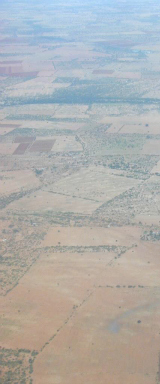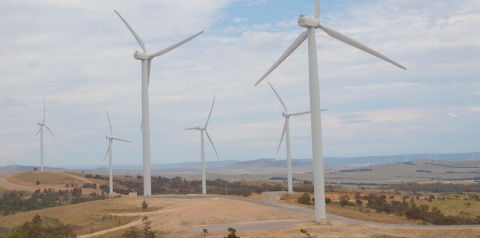Home | About CCW | Contact Us | Climate change Meaning | Causes | Solutions | Emissions | Carbon trading
Carbon emissions
Carbon emissions make up 74% of all greenhouse gas emissions from human activity — the rest comes mostly from methane and CFCs
Carbon is released to the atmosphere as CO2 quite naturally as animals respire, the microbial-fungal cocktail in soil decomposes dead organic material and when forests and grasslands burn.
But CO2 is also generated when humans:
- burn fossil fuel [mostly coal and gas] to generate electricity
- burn fossil fuels in transport [mostly oil]
- burn fossil fuel to heat buildings [mostly oil and gas]
- clear land of vegetation for agriculture
- burn vegetation and crop residues
In 2007 these activities generated 199,782 million tCO2e (roughly 200 GtCO2e) an amount that has increased steadily since the early 1800s.
This increase in carbon emissions from human activity correlates with an increase in atmospheric concentrations of CO2 from 280 ppmv (parts per million by volume) in 1800 to 391 ppmv in 2011.
It is this extra release of CO2 to the atmosphere that we seek to reduce as the major climate change mitigation action — what we believe we can do to slow or even halt global warming.
Emissions reduction are at the core of climate change policy and the amount of carbon released becomes the unit of measurement for
- targets agreed to by nations at the UNFCCC conferences
- the accounts we take to decide if the targets have been met
- credits within the various cap-and-trade schemes
How to reduce carbon emissions
#1 transport
It will take a generation or two but we could wean ourselves off fossil fuels for transport.
Electricity is the most obvious alternative energy source for vehicles delivered via batteries recharged from mains supply or generated on-board in fuel cells.
Hybrid fuel systems are a transition to fully electric cars. The success of the fully electric Telsa sedans suggests that the future will be in electric vehicles.
Alternative fuels for aviation are more challenging. However, improved design together with construction of aircraft with lighter composite materials could reduce conventional fuel demand by up to 70%.
#2 Clearing and burning vegetation
It sounds simple enough to stop the clearing and burning of vegetation. Just tell people to stop doing it, if necessary through legislation to make such practices illegal.
This generally works in the developed world thanks to a legal system and a will on behalf of many in society to protect remaining remnant vegetation that has not already been cleared. Most of the agricultural land in the west was cleared a long time ago.
But in Australia, where there are many legal restrictions, annual land clearing is still 200,000 ha each year. This clearing emits 49 million tCO2e in greenhouse gases
the problem is more challenging in the developing world where much of the clearing is for subsistence agriculture.
Here the opportunity is to create incentives.
Carbon projects that reward stewardship of forests and vegetation with financial payments from the sale of credits generated from the avoided emissions.
Similar incentives can help manage the use of fire.
#4 Electricity generation
The big challenge is electricity generation.
Coal is abundant, cheap and easy to transport. It is also a great source of concentrated energy that is released when the coal burns.
Power stations, on the other hand, are expensive. They require a long life to provide investment returns, but the return is solid because everyone has to buy electricity.
The combination of abundant, cheap commodity, long-term investment returns and ever growing demand is not easy to break.
It creates investments that become the mainstay of our economic systems, designed to accommodate risk averse investors thanks to solid, long-term financial returns.
Even though there are technologies for alternative energies, we do not want to make the more risky investments necessary for the energy transition.
Carbon emissions from the burning of coal will be with us for some time.
The problem of carbon emissions and how to reduce them — or even if they need to be reduced — is one of the most vexing issues of the whole climate change conundrum.
This means that climate change wisdom has many more pages on emissions:
Greenhouse gases
Natural gas emissions
[climate change wisdom] › carbon emissions
Recent Articles
-
Reducing emissions while looking for solutions...
Nov 01, 15 04:46 PM
I've seen a lot of post's online for ideas on reducing emissions. The one suggestion I have not seen, is the most obvious. There should be a government -
Climate change evidence
Mar 24, 15 06:22 AM
Real climate change evidence has to demonstrate a change in climate. An extra sunny day or a severe storm or a flood is not enough. -
The climate change effect
Feb 19, 15 03:08 AM
What will be the climate change effect? There isn't one, there are many. Perhaps too many for us to understand.




New! Comments
Have your say about what you just read! Leave me a comment in the box below.